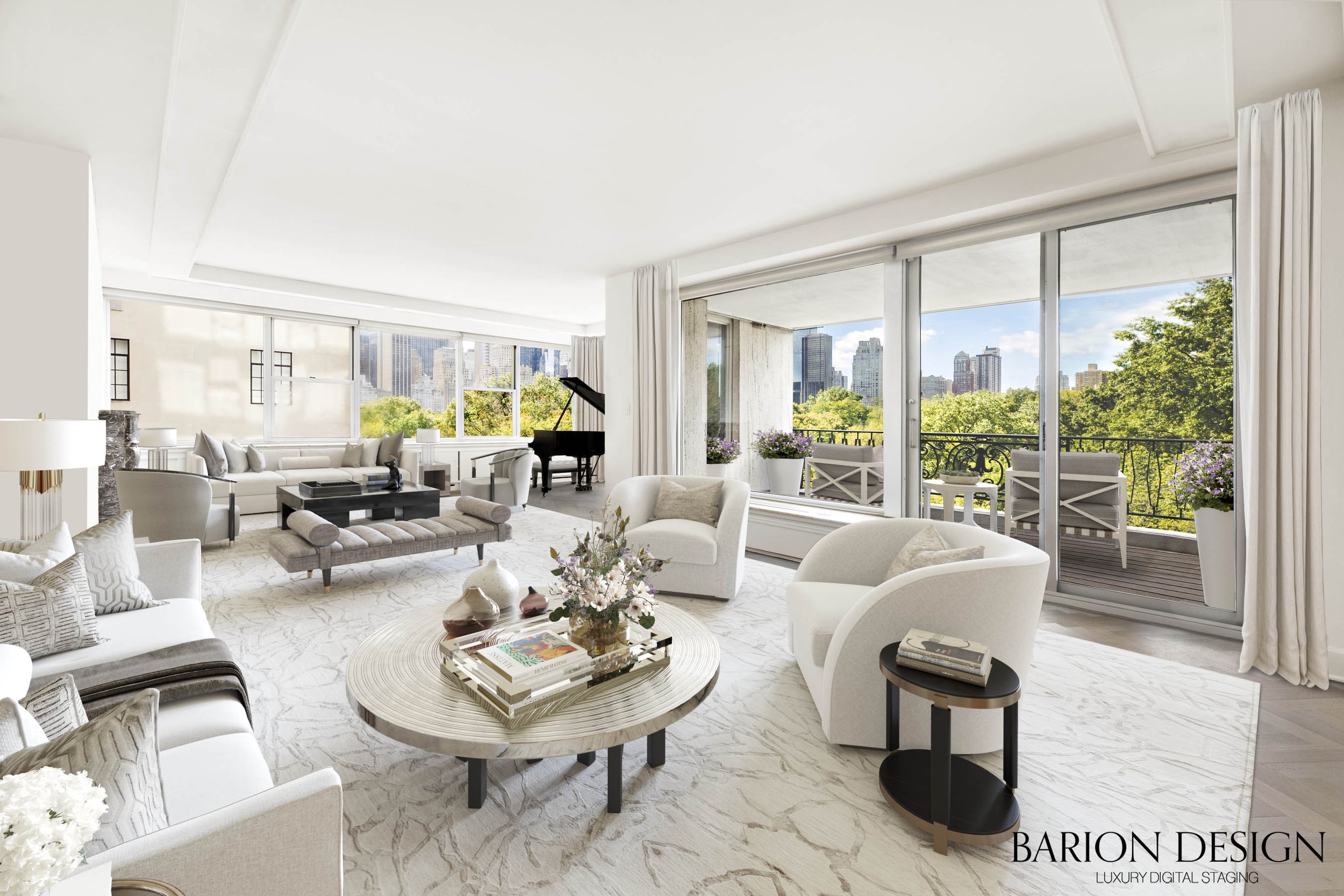Maximizing Your Home’s Appeal with Virtual Furniture
In today’s fast-paced real estate market, first impressions are more critical than ever. With the majority of homebuyers beginning their search online, the visual presentation of listings has become paramount. This is where the power of virtual staging, particularly through the use of virtual furniture, comes into play. Virtual staging allows sellers to furnish their property digitally, showcasing its potential without the physical labor and expense of traditional staging. In this blog, we delve into the advantages of using virtual furniture to maximize your home's appeal and, ultimately, its value in the market.
The Digital Transformation of Home Staging
Virtual staging harnesses 3D technology to create realistic images of furnished interiors. Unlike traditional staging, which involves renting and physically arranging furniture in a space, virtual staging is done entirely on a computer. This innovation not only saves time and money but also offers unparalleled flexibility in design. You can choose from a wide range of styles and arrangements until you find the perfect fit that highlights your home’s best features.
Why Virtual Furniture Makes a Difference
Cost-Effective Transformation: Traditional staging can be prohibitively expensive, with costs including furniture rental, transport, and staging fees. Virtual staging, on the other hand, offers a significant cost advantage, requiring only a fraction of traditional staging expenses.
Appealing to Buyer Imagination: A well-staged home helps potential buyers visualize themselves living in the space. Virtual furniture can make an empty house feel warm and inviting or revamp a cluttered space into a clean, attractive home.
Customization at Your Fingertips: Whether your target market prefers modern minimalism or cozy traditionalism, virtual staging can adapt your space to appeal to various buyer tastes. This customization extends to tweaking furniture arrangements, colors, and styles without physical effort or expense.
Highlighting the Home’s Potential: Through strategic placement of virtual furniture, you can highlight the strengths of your home, such as spacious living areas or a functional layout, while minimizing any drawbacks.
The Process of Virtual Staging
The process begins with high-quality photographs of the empty rooms. These images are then digitally furnished by professionals using 3D modeling software. The key is to ensure that the virtual furniture is proportional and fits well within the space, maintaining a realistic and appealing appearance.
Best Practices for Virtual Staging
Quality Over Quantity: It’s essential to maintain a balance between furnishing a room and overcrowding it. The goal is to enhance the space, not overwhelm it.
Keep It Real: Ensure the virtual furniture not only matches the home's architectural style and existing fixtures but also looks convincingly real. Cartoonish or overly exaggerated virtual staging can detract from the listing's appeal, making it less effective in capturing potential buyers' interest.
Focus on Key Areas: Prioritize rooms that have the most significant impact on buyers, such as the living spaces, primary bedroom, and kitchen. These areas typically play a crucial role in the purchasing decision.
Honesty is the Best Policy: It’s important to disclose that the images have been virtually staged. Misleading potential buyers can lead to disappointment and mistrust.


Maximizing Appeal Through Virtual Staging
To make the most out of virtual staging, consider the following tips:
Target Audience: Tailor the virtual furniture to suit the tastes of your likely buyers. If you’re selling a family home, for example, ensure the staging reflects a family-friendly environment.
Emphasize Space and Functionality: Use virtual furniture to demonstrate how spaces can be used, highlighting multi-functional areas or how to arrange furniture in an oddly shaped room.
Create an Emotional Connection: Aim to evoke an emotional response from potential buyers. A well-staged home can create a sense of desire and urgency.
Use High-Quality Images: Since these images will be the first impression potential buyers have of your home, ensure they are of high quality, well-lit, and professionally edited.
The Impact of Virtual Staging on Sales
Virtual staging has been shown to significantly impact the real estate market. Listings that utilize virtual staging tend to sell faster and for higher prices compared to non-staged homes. This effect is due in part to the enhanced visual appeal, which attracts more views and shares online, increasing the property’s exposure.
Conclusion
Maximizing your home’s appeal through virtual furniture is a smart and effective strategy in today’s digital age. It offers a cost-effective, flexible, and impactful way to present your property in the best possible light, appealing to a wide range of potential buyers. By following best practices and leveraging the power of virtual staging, you can significantly enhance your home’s marketability, ultimately leading to a quicker sale and potentially higher sales price. As we move forward, virtual staging will undoubtedly continue to play a pivotal role in the real estate industry, transforming how we buy and sell homes in the digital era.
